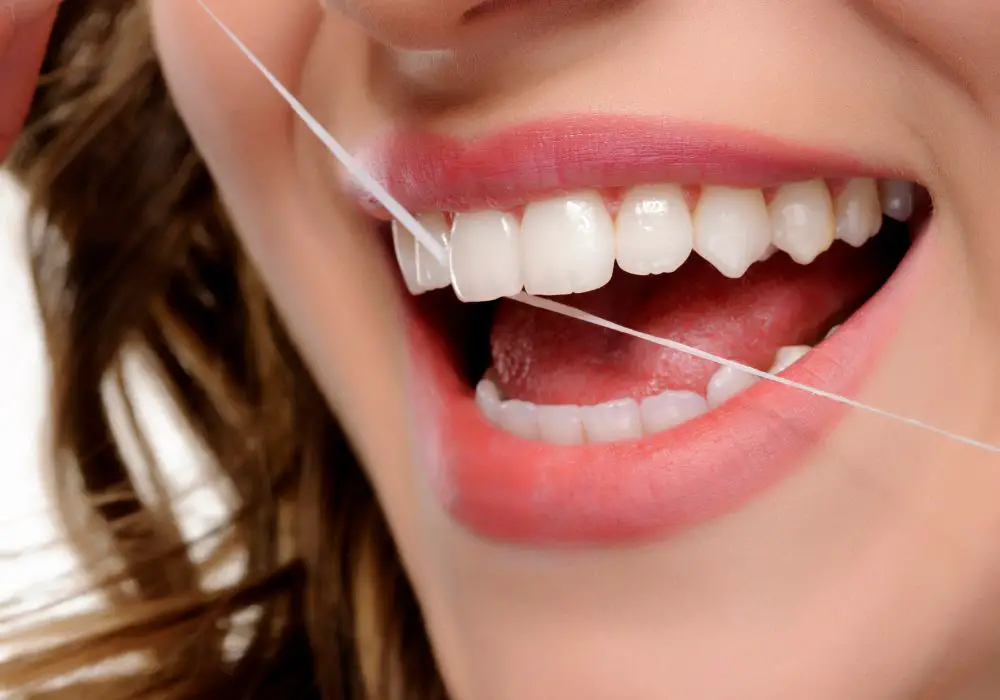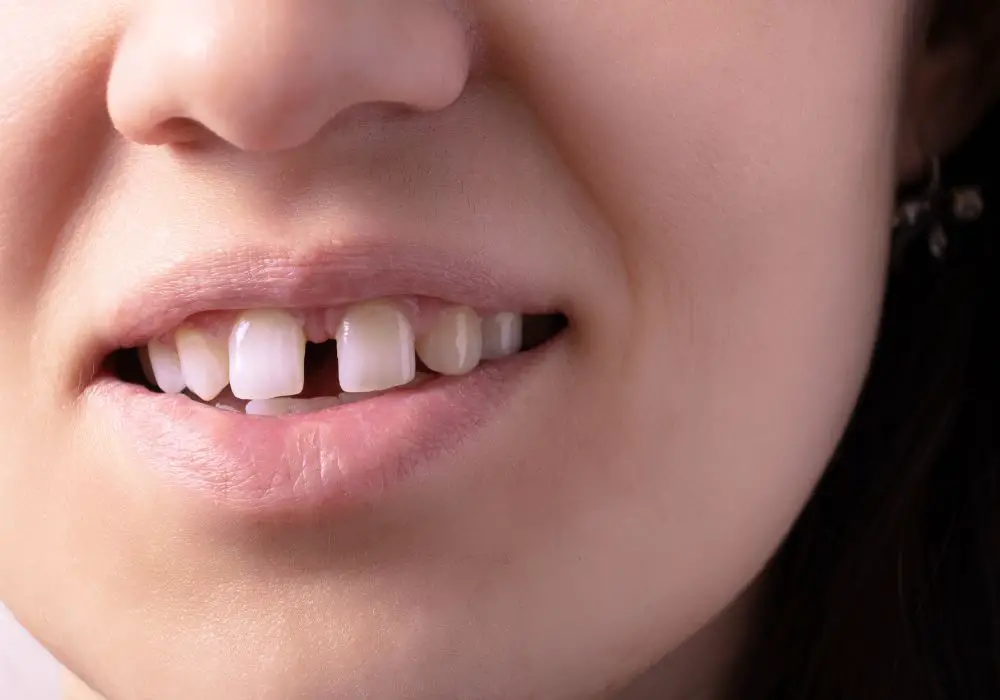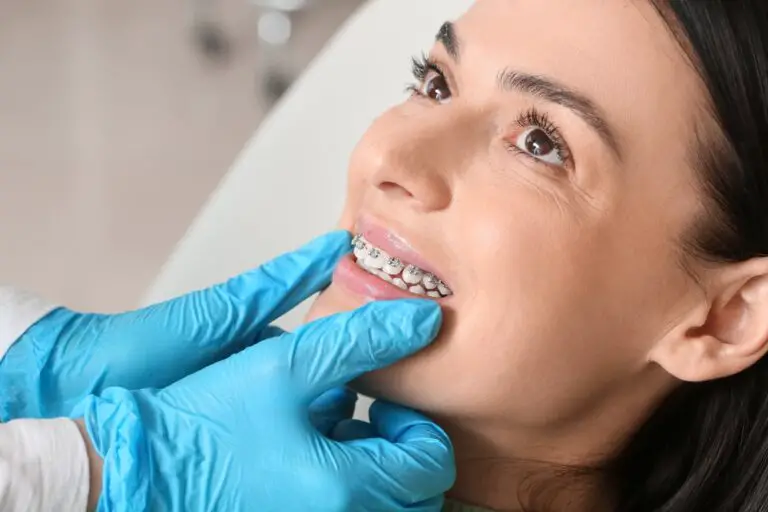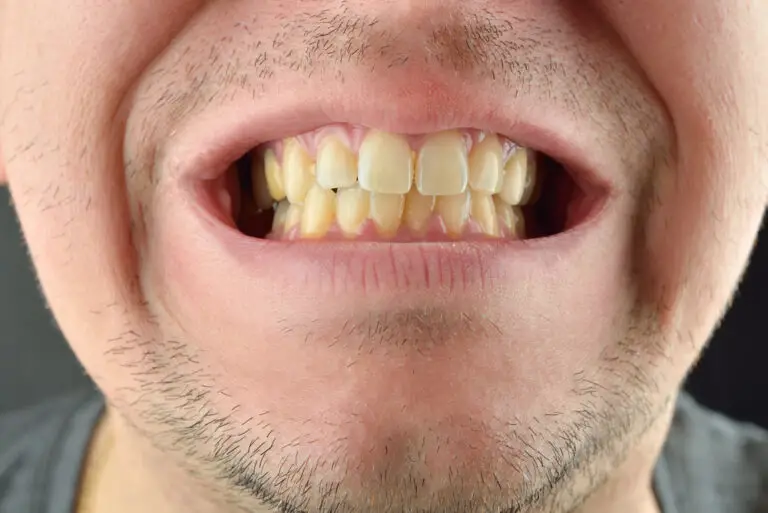Having a small gap or space between the two upper front teeth is a dental trait that some people find visually appealing for aesthetic reasons. In dentistry, this gap is referred to as a diastema or interdental spacing. While genetics and oral development play a large role in determining natural tooth spacing issues, some individuals attempt to artificially create or widen a diastema using various methods. But is it actually possible to safely and successfully force your teeth apart to make a gap?
What causes gaps between teeth?

There are several potential causal factors that can contribute to the presence of a diastema:
- Genetics – Spacing between teeth can be an inherited trait. Many people naturally develop small gaps between certain teeth due to genetic predisposition, with no intervention.
- Oversized labial frenum – The labial frenum is the small band of tissue that extends between the inside of the upper lip and the gumline. An overdeveloped or wide labial frenum can exert pressure that pushes the front teeth apart over time, creating space.
- Missing teeth – If certain teeth are congenitally missing or extracted and not replaced, adjacent teeth can drift or tip into the empty space. This creates gaps between the remaining teeth.
- Undersized teeth – Microdontia, or teeth that are smaller than normal, can leave extra space that leads to gaps when the teeth align.
- Prolonged thumb sucking – Sucking one’s thumb beyond early childhood years can cause misalignment of the front teeth and create spacing between them.
- Abnormal tongue thrusting – If the tongue presses against the front teeth in an abnormal swallowing pattern long-term, it can push teeth out of position creating gaps.
- Periodontal disease – Advanced gum disease that causes significant bone loss around teeth enables them to loosen and drift apart, opening up spacing.
- Aging – As we age, receding gums coupled with wearing down of the teeth often leads to new or enlarged spaces opening up between teeth.
Why do some people desire a tooth gap?
While diastemas are seen as problematic by some, other individuals actually aspire to have or widen a small gap between their front teeth. Some of the reasons include:
- Aesthetics – Gaps or spaces between the front teeth are considered fashionable, cute, or visually appealing by certain people. Individuals may intentionally emulate the smiles of well-known celebs like Madonna, Lauren Hutton, Vanessa Paradis or Elton John who have front tooth gaps.
- Uniqueness – Having a small gap can make a smile appear more unique, memorable and visually distinctive. It disrupts uniformity for a certain aesthetic.
- Youthfulness – Wider, imperfect spacing between teeth is commonly seen in children’s developing smiles. Some want to retain this youthful quality long-term for a cute charm.
- Different cultural standards – In some cultures historically, gaps between the front teeth were seen as attractive and endearing. They were also thought to be symbols of fertility and good fortune. These beliefs still influence some today.
- Fad – The popularity of tooth gaps among models and entertainers has fueled a fad for diastemas driven by fashion and trends. People emulate the latest celebrity smile intrigues.
What are the risks of forcing a tooth gap?
While purposefully creating tooth gaps may seem harmless on the surface, there are actually several potentially serious risks and consequences:
- Tooth damage – Pushing teeth forcefully out of alignment with fingers, pencils, or other objects can stress and fracture the enamel. It also damages the root structures under the gums.
- Nerve damage – Putting extreme lateral pressure on teeth can traumatize the tooth pulp tissue and nerves inside. This can lead to infection requiring root canal treatments or extractions.
- Gum recession – Aggressively attempting to separate teeth too quickly overworks the gum tissue between causing inflammation, swelling, and gum recession.
- Oral infections – Picking at the gums with objects to try to widen the gap provides pathways for oral bacteria to enter and cause tooth abscesses, cysts and mouth infections.
- Allergic reactions – Some do-it-yourself gap widening methods involve topical irritating substances that can provoke allergic reactions or chemical burns in sensitive individuals.
- Asymmetry – It is very challenging to widen the space between front teeth evenly and symmetrically. The result is often an unsightly, uneven gap.
- Relapse – Any gaps generated through forceful, unnatural at-home methods will likely re-close quickly once the teeth are no longer being actively pried apart.
What techniques do people attempt to create tooth gaps?

There are a wide range of questionable and ill-advised home methods that individuals attempt in hopes of separating their front teeth to create or widen a diastema. These include:
- Inserting fingers, pencils, chopsticks, dental tools, or other objects between the teeth to try to push them forcefully apart over time.
- Rubbing potentially destructive substances like lemon juice, vinegar, alcohol, hydrogen peroxide or aspirin on the teeth and gums to try to break down tooth enamel.
- Applying rubber bands, hair elastics, binder clips, magnets, or improvised orthodontic elastic bands to the teeth to pull them in opposite directions.
- Constantly chewing very hard foods like carrots, nuts, ice cubes or beef jerky in efforts to loosen, weaken, and separate the teeth.
- Picking at and irritating the gums with pins, needles, or dental floss to damage the gum tissue between teeth to expand the gap width.
- Tying dental floss or string tightly around teeth and leaving it in place to exert pressure that might push teeth outward.
- Using fingernail files, emery boards, sandpaper, or rotary tools to grind, thin, and separate the edges of the enamel between teeth.
- Training the tongue to thrust forcefully against the inner teeth persistently to wedge teeth apart.
- Resuming infant behaviors like thumb sucking or pacifier use to re-create childhood spacing.
Why are do-it-yourself gap methods unsafe?
While some of these unprofessional strategies may mechanically succeed at moving teeth and creating space between them, they often come with alarming dental dangers:
- Permanent tooth structure damage – cracking, chipping, loss of enamel protective layer
- Nerve inflammation, infection and pulp tissue necrosis requiring root canals
- Gum recession and openings for dangerous oral infections that can spread
- Progressive loosening and loss of teeth that have become too mobile
- Misaligned bite and jaw function leading to problems like TMJ disorders
- Tooth darkening, yellowing and discoloration from chemical and mechanical insults
- Allergic and toxic reactions to caustic chemicals used to try to make gaps
- Cosmetic flaws if spacing is uneven or gaps quickly rebound after force is removed
These significant risks mean damage from amateur gap creation can lead to complex dental issues that require extensive repairs and treatments.
What are professional methods to create or widen a tooth gap?
Because the risks of do-it-yourself gap forcing are so high, the only advisable way to pursue this cosmetic treatment is through professional dental procedures. A dentist has several options to safely create or incrementally widen a diastema:
- Dental bonding – Tooth-colored bonding material can be applied and sculpted between the teeth to push them apart gradually over time. The downside is an artificial appearance.
- Porcelain veneers – Veneers adhesively bonded onto the teeth can be shaped to add width that creates small spaces between them. A minimal gap can look natural but altering tooth shape is irreversible.
- Clear orthodontic aligners – Custom aligners like Invisalign move teeth incrementally into new positions to open up intentional spaces. This conservative approach takes many months but does not damage the teeth.
- Frenum resection procedures – If an oversized frenum is exerting pressure causing the gap, trimming it surgically can relieve tension and allow teeth to align normally on their own.
- Strategic extractions – In some cases, removing certain teeth enables adjacent ones to naturally drift apart into newly created gaps.
- Interdental enamel reduction – Reshaping by removing a thin band of outer enamel can conserveively and precisely widen a gap.
- Composite resin restorations – Replacing old fillings with properly contoured, built-out new ones can reduce tight contacts and open up space between teeth.
When should a tooth gap be concerning?
While sought out by some for style, in other instances spaces between teeth can signal problems:
- Extremely wide gaps may indicate missing teeth, oral developmental issues, or underlying pathology like cysts.
- Rapidly expanding or suddenly appearing gaps may mean advanced gum disease is destroying supporting bone.
- Shifting, unstable gaps may indicate occlusal trauma or bite misalignment issues.
- Widening gaps displaying visible mobility or looseness can mean advanced gum disease is present.
- Crooked, overlapping, or uneven gaps may indicate problems like malocclusions or congenitally missing teeth.
Sudden changes in existing spaces between teeth, or notable asymmetries in new gaps, always warrant thorough examination by a dentist to determine the underlying cause and decide if treatment is indicated. While not always a health concern in isolation, gaps can sometimes be a symptom of larger orthodontic or periodontal issues requiring correction.
How can unwanted tooth gaps be closed?

For those seeking treatment to minimize or close unsightly spaces between their teeth, modern cosmetic and restorative dental options include:
- Dental bonding – Tooth-colored resin material can be layered between teeth to fill in gaps or spaces. Easy and inexpensive but requires maintenance.
- Porcelain veneers – Thin dental facings are adhesively bonded to the teeth to mask gaps. More durable but enamel must be removed.
- Crowns – Tooth-shaped caps placed over teeth create the illusion of ideal alignment and completely close gaps.
- Orthodontics – Clear aligners or braces incrementally move teeth to meet and close gaps over months of wear time. The most conservative method.
- Frenectomy procedures – Releasing an oversized frenum allows teeth to come together naturally and close space.
- Restorative fillings – Replacing old deficient fillings with properly shaped, contoured new ones can reduce unwanted spaces.
Frequently Asked Questions
Is a small gap between front teeth bad for dental health?
A minor natural diastema is not inherently detrimental to oral health. But attempting amateur do-it-yourself gap widening can damage the teeth and gums in ways that create problems.
Do spaces or gaps between teeth look unattractive?
Beauty is subjective. While some people dislike the look of diastemas, many find gaps cute, unique, or fashionable when small. It comes down to personal preference and cultural standards of attractiveness.
Can gaps between teeth close or shrink as you get older?
Sometimes. Teeth may naturally drift and upright over time, slowly closing a longstanding gap from childhood. But gaps can also worsen with age as gum recession occurs and teeth wear down or loosen. An existing gap may remain stable across the lifespan.
Can Invisalign orthodontic treatment close a gap between front teeth?
Yes. Invisalign’s clear plastic aligners are very effective at incrementally bringing teeth together in adults to close spaces or gaps between teeth safely over several months of wear. Invisalign can also open gaps if desired.
Will a childhood gap between my two front teeth go away on its own as I mature?
If the diastema appeared due to prolonged thumb sucking and lingual frenum tension, it may resolve spontaneously once these habits stop. But a stable gap present since very early childhood will often remain unchanged into adulthood without orthodontic intervention.
Does gum disease cause gaps between teeth?
Advanced periodontal disease can damage the supporting bone around teeth causing them to loosen and drift apart. This may suddenly open up noticeable spaces between teeth that worsen with progression of gum deterioration.
Conclusion
In summary, gaps or diastemas between front teeth may occur naturally but can also be created intentionally through orthodontic intervention. Forcing teeth apart without professional guidance can lead to permanent damage and unappealing results. But modern cosmetic and restorative dental treatments make it possible to safely achieve or eliminate tooth gaps with careful technique and materials. Consulting a dentist experienced in smile esthetics allows those with spacing issues to reach their ideal alignment goals without jeopardizing oral health.







